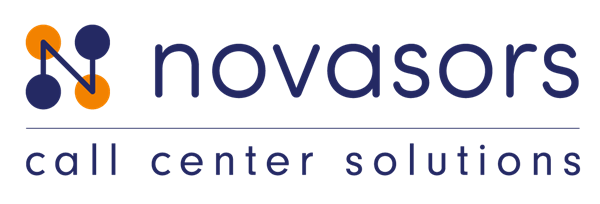Monitoring your company’s call abandonment rate is an important way to measure the impact of your customer service team as well as the happiness of your customers. Here’s what you need to know about making your call abandonment rate the best it can be.
What Is a Call Abandonment Rate?
The abandonment rate refers to the percentage of calls that an inbound caller ends or abandons before connecting with a customer service agent. You can determine your call abandonment rate with a simple calculation. Subtract the number of calls the center handled in a specified amount of time from the total number of calls received during that period and divide the result by the total number of calls received. Multiply the result by 100 to determine the percentage of abandoned inquiries.
When calculating abandonment rate, remember that it’s standard to omit calls ended within the first 10 seconds. Typically, customers hang up this quickly only because they genuinely misdialed, fear that they entered the wrong phone number, or weren’t prepared for the call. These are considered errors and thus eliminated from most abandonment rate calculations.
How to Measure Success
For many call centers and their clients, abandonment rate is a key performance indicator (KPI). This percentage shows how well you perform and whether you’ve successfully met goals. In the call center industry, an abandonment rate of 2 percent generally signals good to excellent performance, while rates up to 5 percent are considered acceptable. If your call center experiences rates higher than 5 percent, consider a few strategies to improve customer service and satisfaction.
Add More Staff Members
Unusually high abandonment rates often reveal that your customer service center isn’t adequately staffed. The easiest way to address this problem is to hire additional staff members to handle inquiries. By increasing your staff, your center will be able to process more requests, thus decreasing the likelihood that inbound callers will hang up before an agent answers.
Improve Training
Adding new customer service representatives to your team might allow your center to process more inquiries in theory, but this may not play out in practice if you don’t properly train your staff. Analyze completed calls to determine where training-related problems arise. When working with tech support agents, do they understand your customers’ issues and provide effective solutions in order to resolve problems efficiently? When working with sales agents, do they follow a streamlined procedure to capture and process orders quickly? Consider adding advanced call center training programs or revising scripts if necessary.
Implement a Call Back Option
Some inbound customers hang up and try again later because they simply can’t spare the time to wait on hold. Though they may be able to resolve their issue with a subsequent call, this doesn’t make for happy customers or great abandonment rates. Call back services hold customers’ place in line and allowing them to request a call back instead of remaining on the line. Implementing this option is easy from a technological standpoint and can greatly reduce the inconvenience that your customers might otherwise experience.
Understand Peak Demands
For customer service centers, long wait periods often signal greater demand for new sales or product support. While sudden increases in demand can sometimes come as a surprise, more often than not, they’re predictable. Approach this by reflecting on past results as well as looking forward. Analyze data from the previous quarter or year to understand weekly, seasonal, or event-related customer service demands. Anticipate future demands by understanding client timelines for product releases and service needs, and plan accordingly.
Your abandonment rate speaks volumes about the level of customer service your company provides. These solutions will help you keep your abandonment rates low and your customers satisfied.








